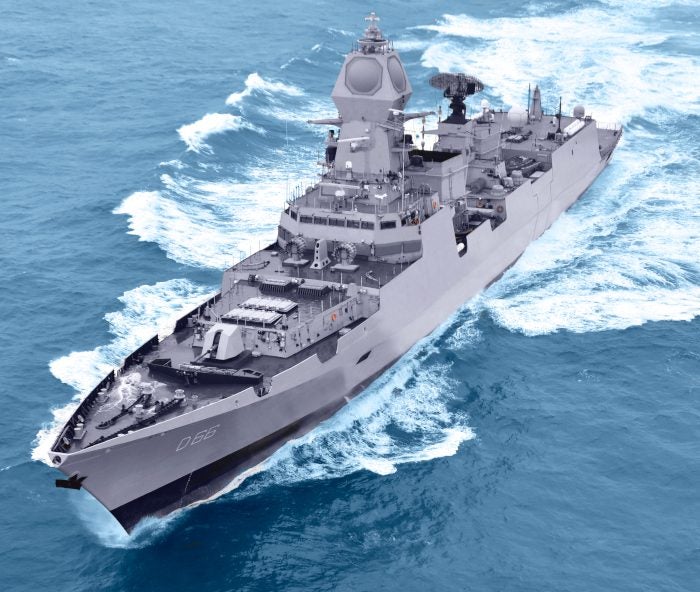
The Quadrilateral Security Dialogue (Quad) is a strategic discourse between the US, India, Japan and Australia, that is maintained by talks between member countries.
The Quad is more of a diplomatic network than a strategic alliance. Its aim – though not openly stated – is to curb Chinese influence and ensure that sea lanes remain open in the South Pacific region. The question is whether the efforts and capabilities of the four nations are enough to keep the ever-growing and powerful People’s Liberation Army Navy (PLAN) awake at night.
How well do you really know your competitors?
Access the most comprehensive Company Profiles on the market, powered by GlobalData. Save hours of research. Gain competitive edge.

Thank you!
Your download email will arrive shortly
Not ready to buy yet? Download a free sample
We are confident about the unique quality of our Company Profiles. However, we want you to make the most beneficial decision for your business, so we offer a free sample that you can download by submitting the below form
By GlobalDataAir superiority
The Japan Air Self-Defense Force (JASDF) received the very first KC-46A Pegasus tanker aircraft in October. JASDF and the US Air Force (AF) awarded Boeing a foreign military sale contract for the first tanker and logistic support in December 2017. The forces then exercised options for an additional aircraft of the same type at the end of 2018, and for two more in October 2020.
The delivery marks the JASDF as the first Boeing KC-46A user outside the US. The versatile tanker has both a fly-by-wire boom and a wing-mounted hose and drogue refuelling system with the capability to offload fuel at 1,200gal/min (5455l/min) and 400gal/min (1818l/min), respectively.
The aircraft’s maximum fuel capacity is 212,299lb (96,262kg) but is also fitted with a flush-mounted air-to-air refuelling receptacle. This enables the KC-46A to receive fuel at 1,200gal/min. The first refuelling flight of the then Japan-bound tanker was completed in August 2021.
Mid-air refuelling allows the receiver aircraft, which are most often fighter jets, to cover larger distances. Planes are frequently topped up once airborne when fuel quantity is compromised at take off by adding more cargo but remaining within the maximum take off weight.
The Pegasus weighs around 20,7671lb (94.198kg) and can take off with a maximum weight of 415,000lb (188,215kg). It can carry 18 cargo pallets and 58 passengers in normal circumstances, but this can be extended to 114 passengers in case of contingency.
The KC-46A will also enhance Japan’s security and help maintain its air superiority with the aircraft defensive and tactical situational awareness systems.
Boeing Japan’s president Will Shaffer said in a statement: “Japan’s acquisition of KC-46A tankers marks a significant milestone for both the program and US-Japan cooperation in the Indo-Pacific region and plays a critical role in the security alliance between both countries.
“With its ability to carry cargo and passengers, the KC-46A tanker can also support Japan’s humanitarian and disaster relief efforts.”
The KC-46As will be joining the four Boeing KC0767 tankers that the JASDF currently operates, and are capable of refuelling JASD, US Air Force, US Navy and US Marine Corps aircraft.

India’s naval efforts
Between 2015 and 2019 the US built 68 military vessels, India 48, Japan 29 with Australia falling last with its nine ships. During the same period, the PLAN constructed 132 vessels.
However, in November the Indian Navy received a significant boost to its naval capabilities. It received the first and the lead ship of the Project 15B stealth missile destroyers, the Y 12704 Visakhapatnam. The contract for the programme was signed in January 2011.
The ships are designed by the Indian Navy’s in-house design company the Directorate of Naval Design and are built by M/s Mazagon Dock Shipbuilders in Mumbai. The Navy will receive four of the destroyers, all named after main cities from four corners of the country. After Visakhapatnam, Mormugao, Imphal and Surat are set to follow.
The ships are built using DMR-249A grade steel developed by the Defence Metallurgical Research Laboratory under the New Delhi-based Defence Research and Development Organisation. Each of the vessels are 163 metres long with a full load displacement of 7,400t and a maximum speed of 30knts.
The Visakhapatnam is equipped with major indigenous weapons that will support engagement from long-distance, with sea-based and air targets. Weapon systems include the BEL Bangalore medium-range surface-to-air missile, BrhamMos surface-to-surface missiles, Larsen & Turbo torpedo tube and anti-submarine rocket launchers and the 76mm BHEL super rapid gun mount.
The Indian Ministry of Defence said the 15B project vessels will be able to host and operate a couple of multi-role helicopters and are installed with the latest sensors and multi-purpose surveillance radar systems.
Most recently, Rossel Techsys won a contract with Lockheed Martin to build the Electrical Wire Harness and Interconnect System as part of the support for the Indian Navy’s Lockheed Martin MH-60R Seahawk anti-submarine helicopters.
The $2.1b deal for the procurement of 24 HM-60R was signed between India and the US Government as part of the US Foreign Military Sales programme. India has received three helicopters so far which are currently undergoing pilot and crew training in the US.

The remaining 21 aircraft is set to be delivered at some point in 2025.
The HM-60R is installed with Lockheed Martin’s Common Cockpit avionics suite. The cockpit is based on open architecture and enables the aircraft to perform various missions, including anti-submarine warfare, combat search and rescue, vertical replenishment and airborne mine countermeasures.
Digital communication suite, a fully integrated GPS and internal navigation systems, mass memory data storage and rugged integrated mission computer are all part of the Seahawk’s arsenal. The helicopters, however, will be further modified with various equipment and weapons to fit India’s requirements.
AUKUS
Although the UK is not a part of the Quad, the announcement that Australia has scrapped its $90bn submarine deal with France and entered a new pact with the US and the UK to procure nuclear-powered submarines definitely caused some discontent with China.
The military alliance between the three countries, knowns as AUKUS, has been forged to counter the emerging threat of China in the Indo-Pacific region.
The countries will share technologies and will see the build of at least eight submarines, but the project largely relies on US and UK expertise due to a lack of Australian capability in the area.








